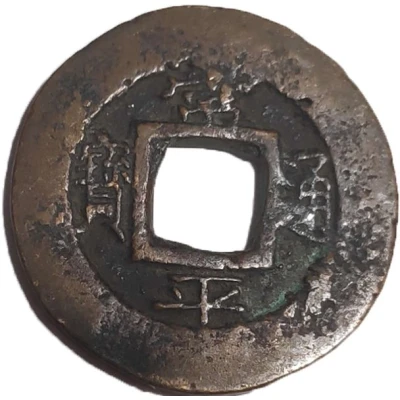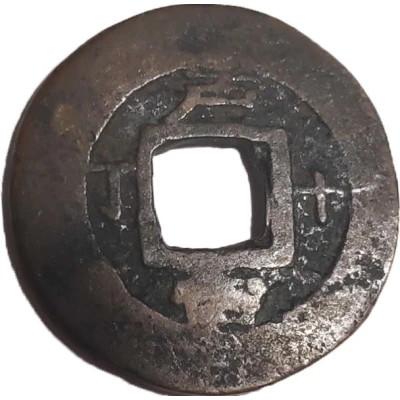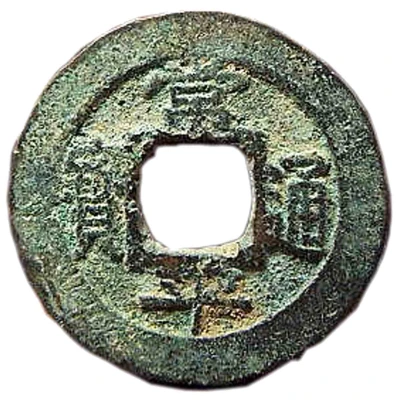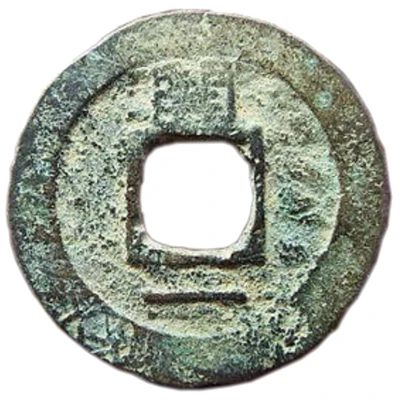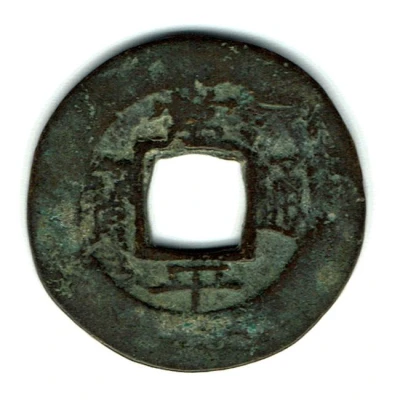
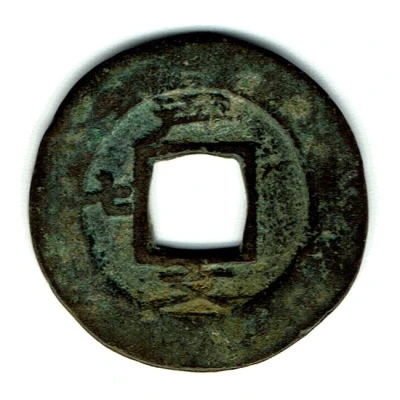

© Christopher Li (CC BY-NC-SA)
1 Mun Ho; Cash ND
1832 year| Copper | 4.11 g | 23.3 mm |
| Issuer | Korea |
|---|---|
| Type | Standard circulation coin |
| Year | 1832 |
| Value | 1 Mun (0.001) |
| Currency | Kingdom of Joseon - Mun (1633-1892) |
| Composition | Copper |
| Weight | 4.11 g |
| Diameter | 23.3 mm |
| Thickness | 1.2 mm |
| Shape | Round with a square hole |
| Technique | Cast |
| Orientation | Medal alignment ↑↑ |
| Demonetized | Yes |
| Updated | 2024-10-06 |
| Numista | N#304892 |
|---|---|
| Rarity index | 93% |
Reverse
Mint mark at top, seriales at bottom, serial number at left
*户 (Ho): Treasury Department
*文 (Mun): Cash
Lettering:
户
七
文
Translation: Treasury Department, series "cash", serial number 7
Interesting fact
The 1 Mun (Ho; Cash) ND (1832) coin from Korea was made of copper, which was a common material used for coinage in ancient times due to its durability and affordability. However, the use of copper in coinage also had a unique cultural significance in Korea, as it was believed to have auspicious connotations, symbolizing good fortune and prosperity. This belief was reflected in the design of the coin, which featured a square shape with a circular hole in the center, representing the harmony between heaven and earth. The coin's design and material composition were meant to convey the idea that the coin was a symbol of good luck and prosperity, and it was believed to bring positive fortune to those who used it in their daily transactions.
